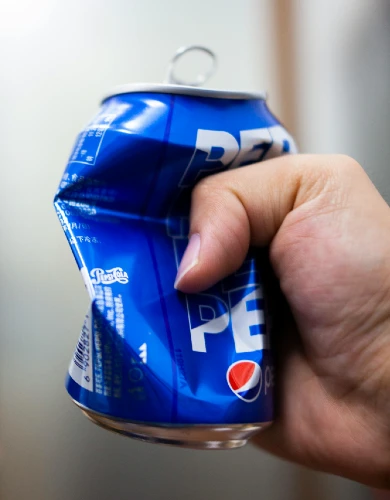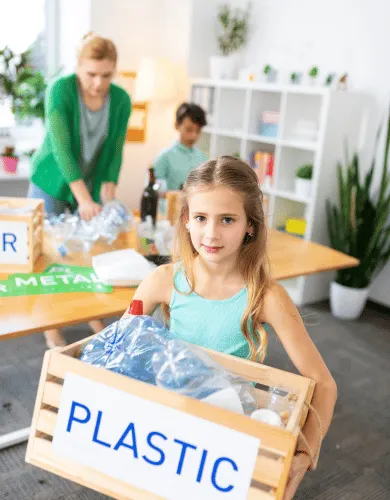Recycling process for common waste types
Simpler recycling rules are making it easier than ever for households and businesses to recycle their everyday waste.
But have you ever wondered what happens to your recycling once it is collected? This article explains exactly how and where this takes place.
Despite recent advancements in commercial recycling technology, you may be surprised at how basic some recycling facilities are and by how much recycling occurs overseas.
Here are the common waste types we cover:
Glass recycling process
Glass bottles and jars are among the most readily recyclable everyday domestic and business waste items. They can be infinitely recycled without losing quality.
A commercial glass recycling collection service transports waste to a local glass recycling facility.
A sorting process first removes non-recyclable glass, such as Pyrex and light bulbs. Then, optical sensors are used to sort the remaining glass by colour.
The sorted glass is crushed into small pieces called cullet and washed to remove impurities, such as paper labels.
The clean cullet is melted at extremely high temperatures and reshaped into new glass products.
Glass recycling facilities in the UK
The UK has 13 glass recycling facilities, and waste collection providers typically use the nearest one. Here are some examples:
- Sheffield commercial waste collection – Transported to a glass recycling facility in Barnsley, owned by Glass Recycling UK.
- London commercial waste collection – Transported to a glass recycling facility in Rainham, owned by May Glass Recycling.
- Leeds commercial waste collection – Transported to a glass recycling facility in South Kirkby, owned by URM UK.
Cardboard recycling process
Approximately 75% of all cardboard waste in the UK is recycled, and businesses can earn recycling rebates from this valuable waste material.
A commercial cardboard recycling service transports waste to a cardboard manufacturing facility.
At the facility, contaminants such as plastic packaging, metal staples, or greasy pizza boxes are removed. The remaining cardboard is shredded and mixed with water and chemicals to produce a liquid pulp.
The pulp is spread out on large sheets and passed through heated rollers to dry. These cardboard sheets are cut and used directly to produce new cardboard products.
Cardboard recycling facilities in the UK
Cardboard recycling in the UK typically takes place at cardboard manufacturing plants. Here are some examples:
- Birmingham commercial waste collection – Transported to a Smurfit Kappa cardboard manufacturing facility in Saltley.
- Kent commercial waste collection – Transported to Kemsley Mill on the North Kent coast, the largest paper mill in the UK.
- Chesterfield commercial waste collection – Transported to a Smurfit Kappa corrugated packaging facility on the Chesterfield Trading Estate.
Plastic recycling process
The wide variety of both recyclable and non-recyclable plastics makes this group of materials one of the most difficult items to recycle.
About half of all plastic waste is non-recyclable and instead goes to an incinerator facility to generate electricity.
Readily recyclable plastic waste, such as PET water bottles, is cleaned and shredded into small flakes, which are then washed to remove any contaminants.
The clean flakes are dried and melted at high temperatures to form plastic pellets, which are used to manufacture new plastic products.
Plastic recycling facilities in the UK
Most plastic waste generated in the UK is not recycled locally but exported to countries with plastic recycling infrastructure, such as Turkey and the Netherlands.
Here are some examples of what happens to collected plastic waste in the UK:
- Liverpool commercial waste – Sent to the Port of Liverpool, loaded onto a boat and transported to East Asia.
- Newcastle commercial waste – Transported to the Port of Tyne, where the plastic is sent to a plastic recycling facility in the Netherlands.
- Edinburgh commercial waste – Most of the plastic waste is sorted and found to be non-recyclable, then disposed of at the Millerhill Recycling and Energy Recovery Centre.
Food recycling process
Commercial food waste obligations require most businesses that generate food waste to use a dedicated food waste collection service.
A commercial food waste collection service transports food waste to either an anaerobic digestion or composting facility.
We’ve produced two dedicated guides to explain how these facilities work:
- Anaerobic digestion – A facility that breaks down organic waste in an oxygen-free environment to produce biogas and renewable energy. There are over 500 anaerobic digestion facilities in the UK.
- Composting – A facility that uses natural decomposition to produce a nutrient-rich soil amendment that can be used in agriculture. There are over 200 composting facilities in the UK.
Food recycling facilities in the UK
Food waste collection providers typically use the nearest food recycling facility to reduce transportation costs. Here are some examples:
- Milton Keynes commercial waste collection – Transported to an industrial anaerobic digestion facility in Bedfordshire.
- Cornwall commercial waste collection – Transported to a composting facility in Hayle on the north Cornish coast.
- Glasgow commercial waste collection – Transported to an anaerobic digestion facility in Rutherglen, in the city’s south.

